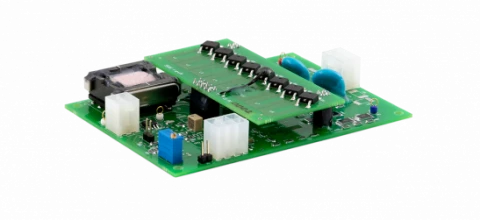QBD Q-switch Pockels cell driver board
Description
Q-switch QBD Pockels cell driver series consists of several boards that differ with output voltage range (up to 6.0kV bipolar) and operating scheme.
QBD-series is specially designed to control Pockels cells by applying a fast switching high voltage. The modules require +24VDC power supply and pulse generator to set an operating frequency. An output voltage level can be programmed in working range by user either manually (through onboard configuration trimpot) or remotely (applying a DC voltage to the respective pin).
There are two possible modifications of output signal type:
- push-up, when a base voltage level equals to zero
- pull-down, when pulses from base bias voltage to ground are generated.
The desired one should be chosen at the time of ordering and could not be changed by user.
QBD-series is based on MOSFET technology and offers high repetition rates and fast transition time for a leading pulse edge. The recovery time by QBD is relatively long (5‑10 μs for the trailing pulse edge vs < 20ns by QBU).
We have also a compact version 4kV QBD-mini Pockels cell driver, an encased laboratory QBD-BT Pockels cell driver, a tiny 3x4cm Q-switch QBD-nano and a QBU Pockels cell driver with variable pulse duration and both fast edges.
QBD Q-switch Pockels cell driver board
Features
- Push-up or pull-down modifications (fixed)
- Up to 6 kV output voltage
- Up to 100 kHz repetition rate
- < 20 ns rise time or < 20 ns fall time (leading edge)
Applications
- Q-switch
For pricing, technical or any other questions please contact the supplier
- No registration required
- No markups, no fees
- Direct contact with supplier
-
Ships from:
Poland
-
Sold by:
-
On FindLight:
since 2020
Frequently Asked Questions
The QBD Pockels cell driver board is used to control Pockels cells by applying a fast switching high voltage.
The QBD Pockels cell driver board has an output voltage range of up to 6.0kV bipolar.
The output voltage level can be programmed manually through an onboard configuration trimpot or remotely by applying a DC voltage to the respective pin.
The two possible modifications of the output signal type are push-up, where the base voltage level equals zero, and pull-down, where pulses from the base bias voltage to ground are generated.
The QBD Pockels cell driver board is based on MOSFET technology and offers high repetition rates and fast transition time for a leading pulse edge.


